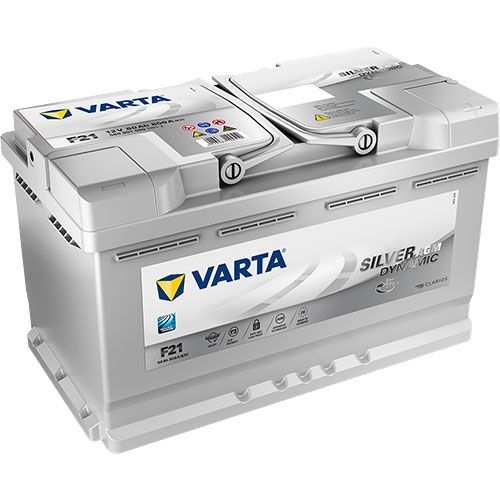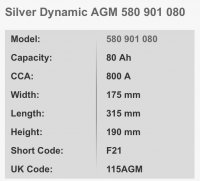If warranted for a certain usage and then used outside that usage - Warranty nul and void.
Also you normally find that batteries designed and sold as Leisure batteries have slightly thicker electrode plates than batteries for Engine Starter usage to allow for deeper more prolonged discharge without damage.
Understanding Leisure Batteries
Unless connected to a mains electricity supply, the 12V equipment in a caravan or motorhome relies on a leisure battery. Leisure battery technology differs from standard car battery technology as it is optimised to handle the loads and patterns of use that are common in caravans and motorhomes.
Standard Starter Batteries
A standard starter battery is designed to produce a high peak current to turn an engine over, typically over 1200rpm down to a temperature of -30°C. This is necessary to overcome the mechanical and thermal resistance of the engine, and depending on the engine design and standing temperature, requires cranking current up to 1000A. The vehicle alternator quickly replenishes lost battery capacity when the engine is running. Standard lead acid starter batteries are designed for standard non start-stop vehicles and are mostly based on calcium grid technology (low water loss technology). The design of these batteries focuses more on start-ability than durability, where plate count and plate surface area are optimised to provide high cranking capability, rather than cyclic durability. Poor quality low cost batteries in this market have been shown to last less than 3 cycles at 100% DOD (Depth of Discharge), i.e. fully discharged cycles, and typically less than20 cycles when compared to the leisure market requirement of 50% DOD. Mainstream automotive batteries tend to last 20-30 cycles at 100% DOD and more than 70cycles at 50% DOD. As a result, standard lead acid starter batteries are not suitable for the cyclic demands that are common to the leisure market.
Leisure Batteries
In contrast to a standard starter battery, a leisure battery has to provide a steady flow of current over a prolonged period and seldom gets recharged until the user recognises that’s its Voltage level has substantially fallen. At this point, a recharge must be provided. If left for a long period in a discharged state, or left connected to a load which forces the battery into an over discharged state, a battery will not regain its former condition. These conditions can lead to the formation of soft shorts which will render the battery unserviceable.
It is general practice to market leisure batteries with some indication of the number of cycles that the battery can achieve at 50% state of charge. By design, increasing the number of cycles given by a battery (life and durability, rather than start-ability) involves the following:
• Adding more lead, generally using higher density active material during plate construction
• Using expensive materials designed to operate the cell packs at a higher pressure (whilst maintaining acid between the plates)
Conventional lead acid leisure batteries are considered to meet the demands of entry level to mid-range applications. Subject to the application, a durability range of 70 to 360 cycles * 50% DOD is common. Recent investment and developments in micro hybrid automotive technology, which bears similar requirements to the leisure market, has resulted in improved conventional leisure battery durability.


















